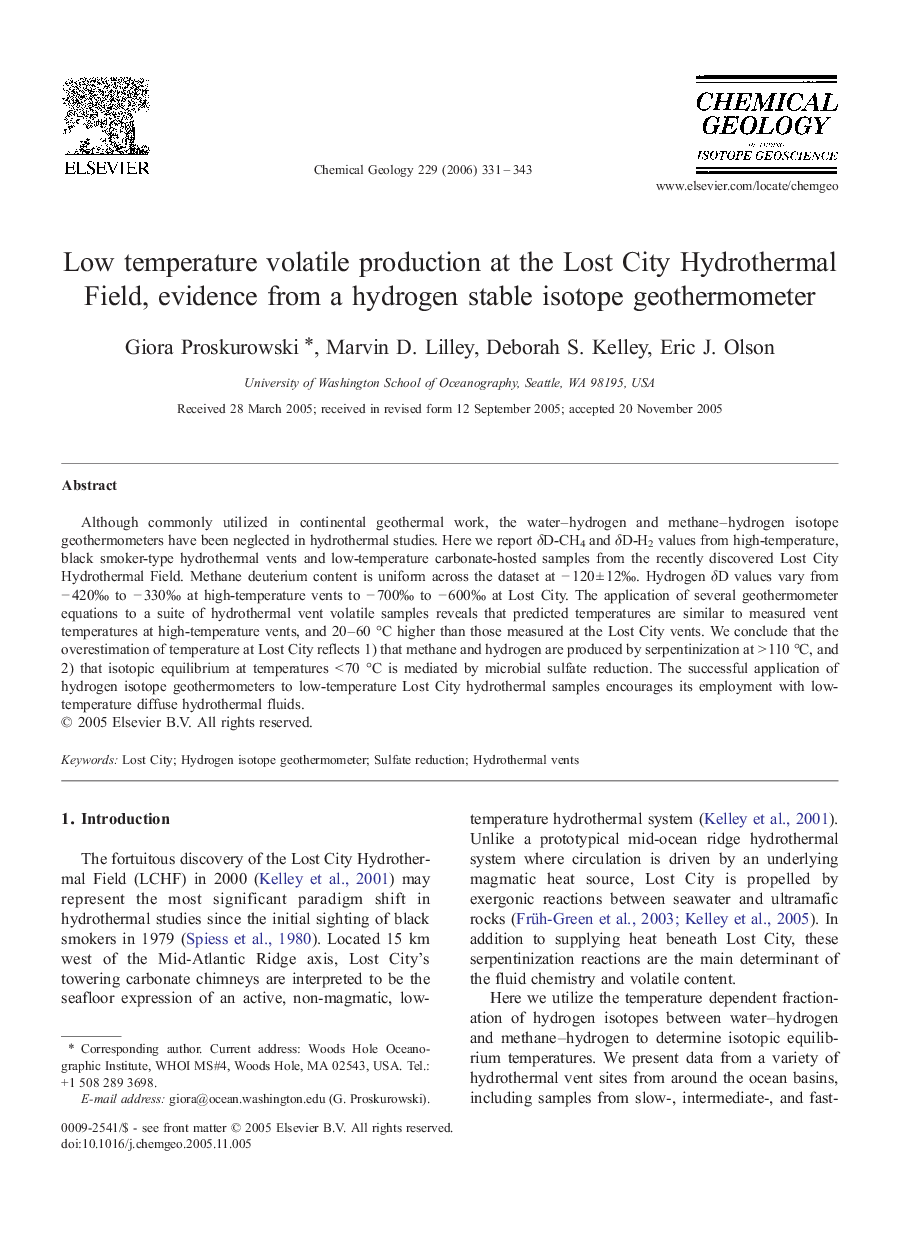| Article ID | Journal | Published Year | Pages | File Type |
|---|---|---|---|---|
| 4701241 | Chemical Geology | 2006 | 13 Pages |
Although commonly utilized in continental geothermal work, the water–hydrogen and methane–hydrogen isotope geothermometers have been neglected in hydrothermal studies. Here we report δD-CH4 and δD-H2 values from high-temperature, black smoker-type hydrothermal vents and low-temperature carbonate-hosted samples from the recently discovered Lost City Hydrothermal Field. Methane deuterium content is uniform across the dataset at − 120 ± 12‰. Hydrogen δD values vary from − 420‰ to − 330‰ at high-temperature vents to − 700‰ to − 600‰ at Lost City. The application of several geothermometer equations to a suite of hydrothermal vent volatile samples reveals that predicted temperatures are similar to measured vent temperatures at high-temperature vents, and 20–60 °C higher than those measured at the Lost City vents. We conclude that the overestimation of temperature at Lost City reflects 1) that methane and hydrogen are produced by serpentinization at > 110 °C, and 2) that isotopic equilibrium at temperatures < 70 °C is mediated by microbial sulfate reduction. The successful application of hydrogen isotope geothermometers to low-temperature Lost City hydrothermal samples encourages its employment with low-temperature diffuse hydrothermal fluids.
